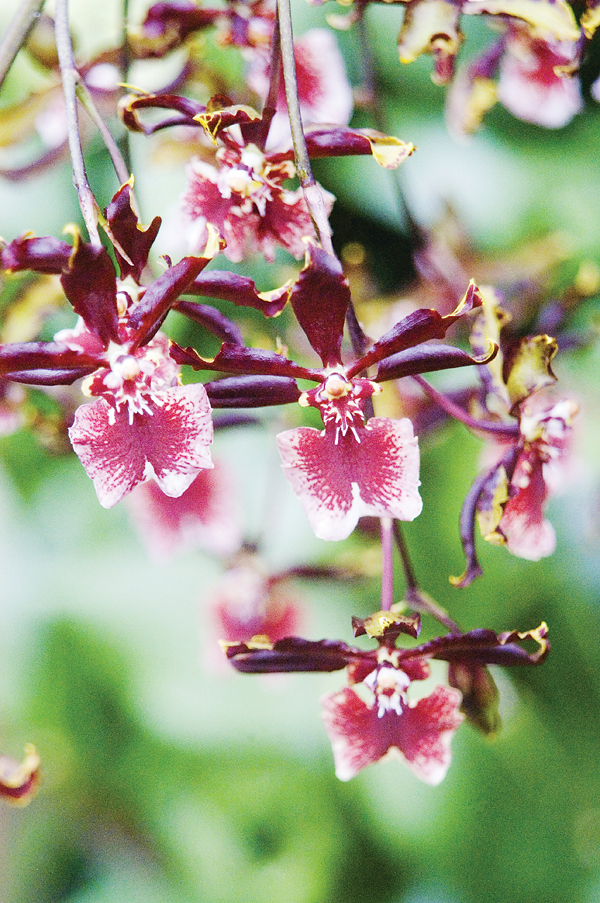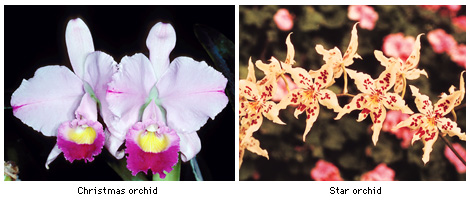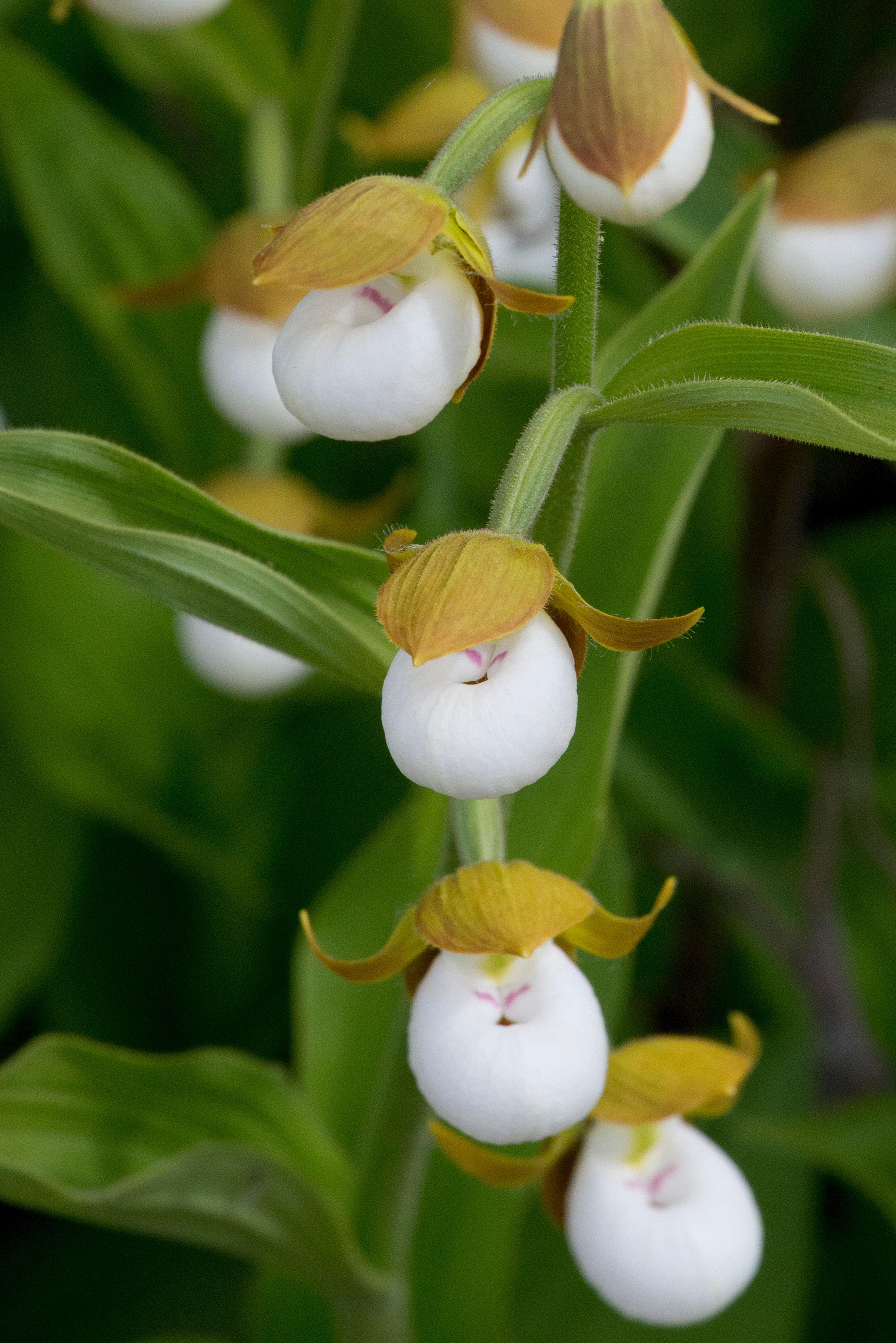Orchid << AWR kihd >> is any of an extremely large family of plants, many of which bear beautiful flowers. There are thousands of species (kinds) of these plants. They are widely cultivated as house, garden, and greenhouse flowers, and they also grow wild. Orchids are perennials, which means the plants live for at least three years.

Orchids range in size from small plants only 1/4 inch (0.6 centimeter) high to vines as much as 100 feet (30 meters) long. The flowers come in all colors except black, and they may be speckled or streaked.
Wild orchids grow in all parts of the world except Antarctica. They are most abundant in regions with plentiful rainfall. Most species grow on the trunks and branches of trees, or on rocks, in warm or tropical areas. Wild orchids that live in cooler regions grow on the ground. Some species even inhabit desert regions. The Australian underground orchids live below the surface of the soil to conserve water.
Parts of orchids.
Like lilies, orchids have three inner petals and three outer, petallike sepals. However, unlike lilies, orchids have a central petal that is usually larger and more showy than the other petals. This petal is called the lip or labellum. It may look like a cup, a scoop, a trumpet, or a bag. Among most orchids, each flower has one stamen (male part) and one pistil (female part) at its center. The stamen bears pollen grains, which usually occur in large clusters called pollinia. The pollen produces sperm cells, while the pistil contains egg cells. Among these orchids, the stamen and the pistil are joined, forming a column.

How orchids reproduce.
Most orchids reproduce by cross-pollination. In this process, an insect, a bat, or a bird carries pollen from the stamen of one flower to the pistil of a flower of another plant. An orchid’s fragrance and the size and shape of its blossoms may attract certain types of insects or birds. For example, many orchids look or smell like bees, attracting bees to the flowers.

After pollination occurs, sperm cells unite with egg cells in the pistil and seeds develop. Orchid seeds are so tiny that they need the help of certain types of fungi to begin their growth. These fungi supply the seeds with various substances needed for growth.
Kinds of orchids.
Most botanists divide orchids into three groups, according to the number of stamens and the form of the column in the flower. The largest group of orchids—the vast majority of all species—have flowers with a completely joined column that typically contains one stamen. This group includes the vinelike vanilla orchids, which grow in Mexico and throughout the tropics. Vanilla, a flavoring in many foods and beverages, occurs naturally in these orchids.

Species with two stamens almost completely joined in the column make up a group called lady’s-slipper orchids (see Lady’s-slipper). A third group consists of orchids with two or three stamens that are at most only partly joined in the column.
